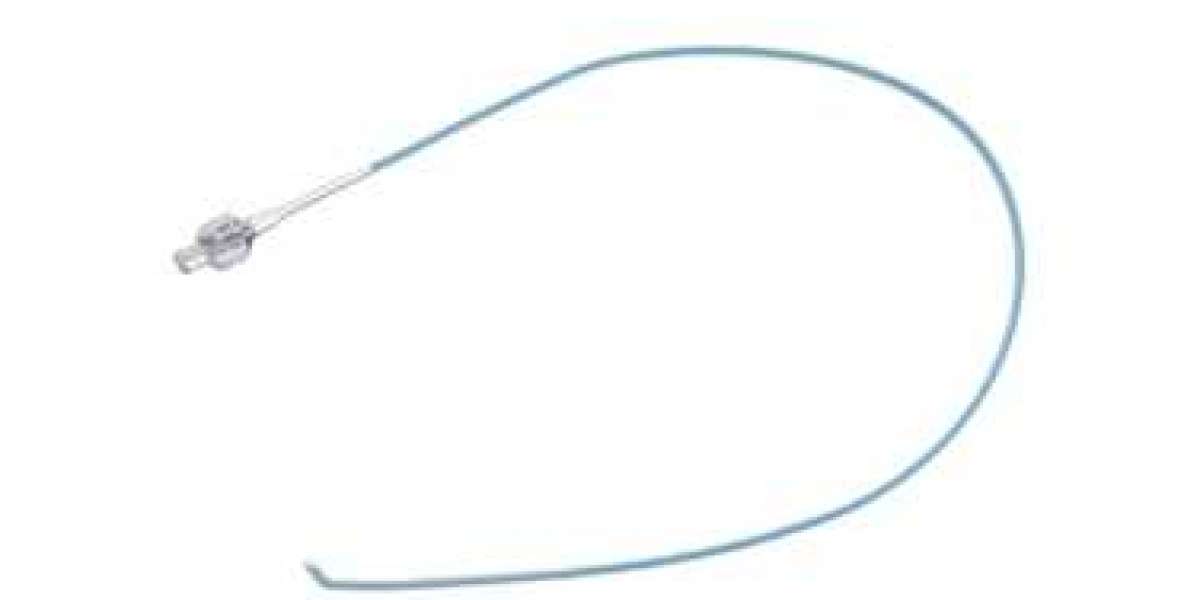Introduction to Diagnostic Catheters
Welcome to the fascinating world of modern medical practice! In today's blog post, we will dive deep into the advancements and importance of diagnostic catheters. These remarkable tools play a crucial role in diagnosing various medical conditions, allowing healthcare professionals to provide accurate and efficient treatment plans for their patients.
Whether you're a medical professional seeking to expand your knowledge or simply curious about the wonders of modern medicine, this article is for you. So sit back, relax, and let's explore the incredible realm of diagnostic catheters together!
But before we delve into the intricacies of these innovative devices, let's gain a basic understanding of what exactly diagnostic catheters are. Stay tuned!
Types of Diagnostic Catheters
When it comes to diagnostic catheters, there is no one-size-fits-all solution. These medical devices come in various types, each designed for specific applications and procedures. Let's take a closer look at some of the most common types of diagnostic catheters used in modern medical practice.
1. Angiographic Catheters: Used primarily in angiography procedures, these catheters are designed to access blood vessels and deliver contrast dye for imaging purposes. They are flexible and have a radiopaque tip that allows them to be guided through the vasculature with precision.
2. Electrophysiology Catheters: These specialized catheters are used in electrophysiological studies and cardiac ablation procedures. Equipped with multiple electrodes, they help map the electrical activity of the heart and detect abnormal rhythms.
3. Urinary Catheters: Often used in urology and critical care settings, urinary catheters allow for drainage of urine from the bladder when normal urination is not possible or advisable due to various medical conditions.
4. Intravascular Ultrasound (IVUS) Catheter: IVUS catheter combines ultrasound technology with a miniature transducer on its tip to provide cross-sectional images of blood vessel walls from inside the vessel itself.
5. Balloon Dilatation Catheter: This type of catheter has an inflatable balloon near its tip that can be expanded once inserted into a narrowed or blocked artery or vein, helping restore blood flow by widening the vessel lumen.
6. Cardioplegia Delivery Catheter : Cardioplegia delivery comprises both antegrade cardioplegia cannulae as well as retrograde cardioplegia cannulae which can be delivered directly via coronary sinus without clamping descending thoracic Aorta respectively during cardio vascular surgeries under circulatory arrest condition
These are just a few examples; many other types of diagnostic catheters exist based on their intended use and specific medical specialties. It's essential to choose the right type of catheter
Applications of Diagnostic Catheters in Medical Practice
Diagnostic catheters play a crucial role in modern medical practice, offering numerous applications across various medical specialties. These versatile instruments allow healthcare professionals to visualize and diagnose conditions within the body, leading to accurate treatment planning and improved patient outcomes.
One common application of diagnostic catheters is in cardiology. Cardiac catheterization procedures involve inserting a diagnostic catheter into blood vessels near the heart to assess cardiovascular health. It allows for the measurement of pressure gradients, evaluation of coronary artery disease, assessment of valvular function, and even intervention through techniques like angioplasty or stent placement.
In interventional radiology, diagnostic catheters are used to perform angiography procedures. By injecting contrast dye through the catheter into specific blood vessels, doctors can identify blockages or abnormalities within arteries and veins throughout the body. This technique aids in diagnosing conditions such as peripheral artery disease (PAD), deep vein thrombosis (DVT), or liver tumors.
Urologists also rely on diagnostic catheters during cystoscopy procedures to examine and evaluate conditions affecting the urinary tract system. The flexible nature of these specialized instruments allows for easy maneuverability within narrow spaces while providing high-resolution imaging capabilities.
Furthermore, gastrointestinal specialists employ diagnostic catheters during endoscopic examinations called ERCPs (endoscopic retrograde cholangiopancreatography). This procedure involves accessing the bile ducts and pancreatic ducts by threading a small tube through an endoscope-guided insertion site. Diagnostic catheters enable visualization and therapeutic interventions for disorders such as gallstones or certain types of cancers.
From cardiology to gastroenterology, urology to interventional radiology - diagnostic catheters have revolutionized medical practice by enabling accurate diagnosis and targeted treatments across multiple disciplines.
Advantages and Limitations of Diagnostic Catheters
Diagnostic catheters play a crucial role in modern medical practice, allowing physicians to access and visualize various parts of the body for diagnostic purposes. These flexible tubes are designed with specific features and capabilities that offer several advantages.
One of the key advantages of diagnostic catheters is their ability to provide detailed imaging of internal structures. By inserting the catheter into blood vessels or other body cavities, doctors can obtain real-time images that help them diagnose conditions such as blockages, abnormalities, or lesions. This allows for more accurate diagnoses and targeted treatment plans.
Another advantage is the minimally invasive nature of diagnostic catheter procedures. Compared to traditional surgical methods, using a catheter reduces trauma to surrounding tissues, decreases recovery time, and lowers the risk of complications. Patients experience less pain during these procedures and often require shorter hospital stays.
Additionally, diagnostic catheters enable therapeutic interventions alongside diagnostics. They can be used to deliver medication directly to affected areas or perform certain treatments such as angioplasty or stenting without requiring separate invasive procedures.
Despite their numerous benefits, it's important to acknowledge some limitations associated with diagnostic catheters. One limitation is the potential risk for infection at the insertion site. Proper sterile techniques must be followed during placement to minimize this risk.
Moreover, in some cases where extensive blockages or complex anatomical variations exist within blood vessels or organs, accessing those areas accurately through a standard-size diagnostic catheter may pose challenges. Alternative techniques like intravascular ultrasound (IVUS) or advanced imaging modalities might be required in such situations.
In conclusion, Diagnostic catheters have revolutionized medical practice by providing valuable information about various conditions within the body while minimizing invasiveness compared to traditional surgical methods. However, careful consideration should always be given when selecting patients for these procedures and ensuring proper training in handling these devices. With ongoing advancements in technology, we can expect even further improvements in diagnostic catheter design and capabilities, leading to enhanced patient care.
Improvements and Innovations in Diagnostic Catheter Technology
Improvements and innovations in diagnostic catheter technology have revolutionized the field of medical practice. With each passing day, manufacturers are constantly striving to develop advanced catheters that offer enhanced precision and efficiency.
One significant improvement in diagnostic catheter technology is the development of smaller and more flexible catheters. These advancements allow for easier insertion into delicate areas of the body, such as blood vessels or the heart. The increased flexibility also enables better maneuverability within tight spaces, ensuring accurate diagnosis and treatment.
Another notable innovation is the integration of imaging technologies into diagnostic catheters. Now, healthcare professionals can obtain real-time imaging during procedures without having to switch devices or rely on external equipment. This not only saves time but also provides a higher level of accuracy in diagnosing conditions.
Furthermore, there have been improvements in material composition used in manufacturing diagnostic catheters. High-quality materials like composite polymers make them more durable while maintaining their flexibility. This ensures longer lifespan and reduces the risk of breakage or malfunction during critical procedures.
Additionally, advancements in digital connectivity have enabled remote monitoring capabilities for diagnostic catheters. Healthcare providers can now access vital patient information through wireless connections, allowing for efficient tracking of patients' conditions even after they leave the hospital setting.
Improvements and innovations in diagnostic catheter technology have significantly improved medical practices by enhancing precision, flexibility, imaging capabilities,and durability while providing remote monitoring options. These advancements continue to push boundaries to improve patient outcomes and further establish their indispensable role in modern medicine.
Conclusion
In today's modern medical practice, diagnostic catheters play a crucial role in providing accurate and detailed information about various conditions and diseases. From their humble beginnings to the advanced technology we have today, these catheters have proven to be invaluable tools for healthcare professionals.
We explored the different types of diagnostic catheters, including angiographic catheters, electrophysiology catheters, and intravascular ultrasound (IVUS) catheters. Each type serves a specific purpose and allows doctors to visualize different areas of the body with precision.
The applications of diagnostic catheters are vast and varied. They aid in diagnosing cardiovascular conditions such as coronary artery disease, arrhythmias, and heart valve disorders. They also assist in identifying blockages or narrowing of blood vessels throughout the body. With these devices, doctors can make informed decisions about treatment plans tailored to each patient's unique needs.
While there are advantages to using diagnostic catheters, it is important to acknowledge their limitations as well. Invasive procedures always carry some risks such as infection or damage to blood vessels. However, advancements in technology continue to improve safety measures associated with these procedures.
Speaking of advancements, ongoing research and innovation have led to significant improvements in diagnostic catheter technology over the years. Manufacturers strive for better image quality, enhanced maneuverability within the body during procedures, reduced radiation exposure for patients and healthcare providers alike – all aimed at optimizing patient outcomes.
In conclusion,Barty Medical remains committed not only enhancing current technologies but also developing new ones that push boundaries further. The role of diagnostic catheter has come a long way from its inception. Its ability provide vital information guiding diagnosis treatment options cannot be underestimated. As we move forward, let us embrace this remarkable tool that continues revolutionize modern medicine.








